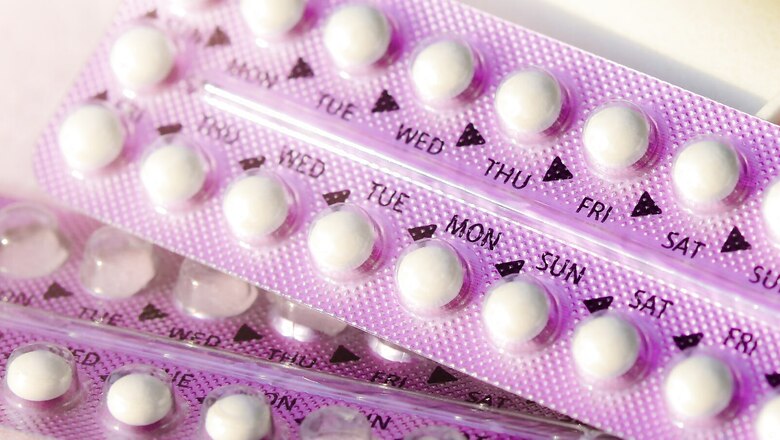
views
Over 16 crore women and adolescents with the need to prevent pregnancy remained without contraception in 2019, despite major increases in use at a global level since 1970, according to a study published in The Lancet journal.
Expanding access to contraception is linked to women’s social and economic empowerment and better health outcomes and is a key goal of international initiatives, and a Sustainable Development Goal (SDG) indicator, the researchers said.
Contraception use is also associated with reductions in maternal and neonatal mortality by preventing unintended pregnancies, they said. Based on data from 1,162 self-reported representative surveys on women’s contraceptive use, the researchers used modeling to produce national estimates of various family planning indicators.
Women were defined as needing contraception when they were married or if unmarried, sexually active, able to get pregnant and not want a child within two years, or if they were pregnant or had just given birth but would have preferred to delay or prevent their pregnancy.
The researchers noted that worldwide, the share of women of reproductive age using modern contraception increased from 28 percent in 1970 to 48 percent in 2019. Demand met rose from 55 percent in 1970 to 79 percent in 2019.
ALSO READ: Can’t Deny Unmarried Women Right to Abortion: SC Expands MTP Act, Allows to Abort 24-weeks Fetus
Despite the major increases, 163 million (over 16 crores) women who were not currently using contraception were considered to have a need in 2019, out of 1.2 billion (over 100 crores) women who needed contraception in total, they said.
“Although we have observed excellent strides in contraceptive availability since the 1970s at a global level, there is still a long way to go to ensure that every woman and adolescent girl can benefit from the economic and social empowerment contraceptives can offer,” said Annie Haakenstad, from Institute for Health Metrics and Evaluation (IHME), University of Washington, US.
“Our results indicate that where a woman lives in the world and their age still significantly impacts their use of contraception, Haakenstad said. In 2019, the availability of contraceptives still differed significantly between regions and across different countries.
Southeast Asia, East Asia, and Oceania had the highest use of modern contraceptives (65 percent) and demand satisfied (90 percent), whereas sub-Saharan Africa had the lowest use of modern contraceptives (24 percent) and demand satisfied (52 percent).
Between countries, levels of modern contraceptive use ranged from 2 percent in South Sudan to 88 percent in Norway. Unmet need was highest in South Sudan (35 percent), Central African Republic (29 percent), and Vanuatu (28 percent) in 2019.
“The higher unmet need among partnered adolescent women represents a risk for unintended pregnancies, affecting the subsequent socioeconomic empowerment of these groups,” said Manas Ranjan Pradhan, from International Institute for Population Sciences, Mumbai.
“The sociodemographic index influences the mCPR (modern contraceptive prevalence rate) and demands satisfaction among adolescents, probably due to vast inequalities on the basis of socioeconomic status and access to health-care services,” said Ranjan, who was not involved in the study.
The Family Planning 2020 Initiative (FP2020) set a goal of increasing the number of women using modern contraception by 120 million between 2012 and 2020 in 69 priority countries, the researchers said. The study estimated that the number of women using contraception increased by 69 million (6.9 crores) between 2012 and 2019 in these countries, leaving the initiative 51 million (5.1 crores) short of reaching its goal if these levels remained unchanged in 2020, they said.
The study found that, compared to other groups, women and adolescents in the 15-19 and 20-24 age groups have the lowest rates of demand met globally — estimated at 65 percent and 72 percent, respectively. Those aged 15-24 comprise 16 percent of total needs but 27 percent of unmet needs — amounting to 43 million (4.3 crores) young women and adolescents worldwide not having access to contraceptives they need in 2019, according to the researchers.
ALSO READ: US President Biden Calls for ‘Exception’ in Senate Rules to Pass Abortion Rights Law
The largest gaps globally were among young, married women, they said. “Importantly, our study calls attention to young women being overrepresented among those who cannot access contraception when they need it,” Haakenstad said.
“These are the women who stand most to gain from contraceptive use, as delaying having children can help women stay in school or get other training opportunities and to enter and maintain paid employment. “This can lead to social and economic benefits that last throughout a woman’s lifetime and is an essential driver towards greater gender equity,” the researcher added.
Read all the Latest News, Breaking News, watch Top Videos and Live TV here.













Comments
0 comment